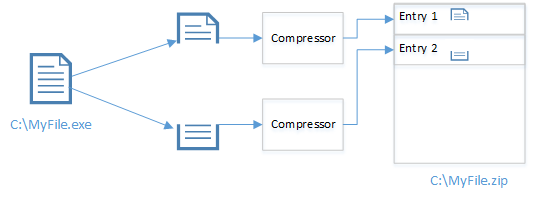In this post I'll document my research into the history of gperf. A copy of the historical documents and source code referenced in this post can be found here.
If you have worked with hashing you have probably used gperf. It is a tool you give a list of keywords and outputs C/C++ code to lookup if a keyword is contained within the list. The lookup function is incredibly fast and looks like black magic.
In 1979 Richard J. Cichelli wrote an article titled Minimal Perfect Hash Functions Made Simple. January 1980 it was published in Communications of the ACM, Volume 23, Issue 1. Back then Richard worked as a Research Manager for American Newspaper Publishers Association Research Institute, but was doing this as part of his own company Software Consulting Services (SCS) which he ran with his wife Martha Cichelli until 2021.
Today, Richard's article is known as Cichelli's Method and works by computing a hash based on the first and last character of the input, as well as the length of the input, then using that hash with an association table to generate a nearly-minimal perfect hash function. Cichelli describes two disadvantages in his article:
- It requires that no two keys share length and the first and last characters
- For lists with more than about 45 items, segmentation into sublists may be necessary
These limitations will become important in the next paragraph.
In December 1980, Gerhard Jaeschke and G. Osterburg from IBM Scientific Center in Heidelberg, West Germany published an article in Communications of the ACM, Volume 23, Issue 12 titled
Technical Response to: On Cichelli's Minimal Perfect Hash Functions Method. In the article, they determine that there exists an infinite number of keywords, on which Cichelli's perfect hash method (noted as Cichelli's Condition or CD) does not work. As a response to this, Richard adds a third disadvantage:
- For certain contrived lists of keys, it may be impossible to determine in advance whether this method will yield a minimal solution.
Note: Gerhard Jaeschke has himself published several articles pertaining to minimal perfect hash functions which are quite interesting, but let's stay on the subject of gperf.
In 1982 Charlie D. Havener wrote a tool called Perfect and in 1983
posted it in the Usenet newsgroup comp.sources.unix. It is based on Cichelli's method, and is the first public implementation, as the Pascal version written by Richard himself was never published. Charlie notes that Perfect was used to write a Lexical Analyzer Data Structure and posted in Appendix B in the article More on Minimal Perfect Hash Tables by Cook, Curtis R. and Oldehoeft, R. R.
Back then Charlie worked with hardware and software design as a
senior principal engineer at GenRad Inc. in the component test division in Bolton, Massachusetts. Later in 1988 he
taught computer science at Boston University. Unfortunately, Charlie suffered from myelofibrosis (a rare blood cancer) and
died November 10, 2012.
In 1984 Keith Bostic
posted an improved version of Charlie's Perfect in the Usenet newsgroup net.sources. He highlights the limitations of the original implementation as mentioned above. Keith needed to hash more keywords than what was supported by Perfect, and therefore, rewrote Perfect to support his use case. He notes the following improvements:
- No limit on the number of keywords
- Much faster
- No need to reorder the keywords
- The ability to specify which keys to hash
- It handles keywords that hash to identical values
Instead of just taking the first and last characters, Keith's version allows the user to specify which characters to hash.
In January 1989 Douglas C. Schmidt wrote version 1.1 of gperf in C++ while he was at University of California, Irvine, USA. As mentioned in the
manual, it was based on Keith's version of Perfect. In May 1989 Douglas made a C version which was published on comp.sources.unix.
For many years, gperf was part of the libg++ library and the sources can still be found in
old releases. The earliest release i could find was libg++-1.35.1. In August 2000, with the release of version 2.7, it was moved to be a separate project.


Comments
Post a Comment